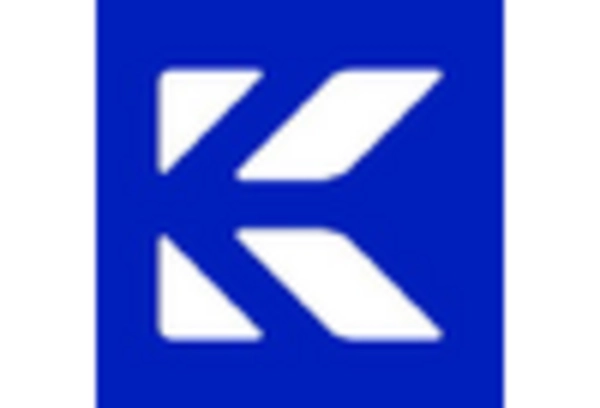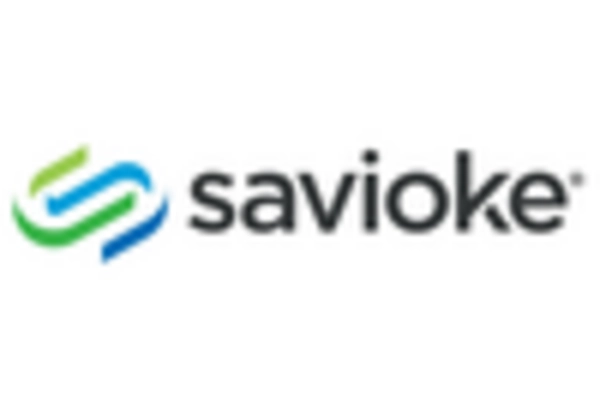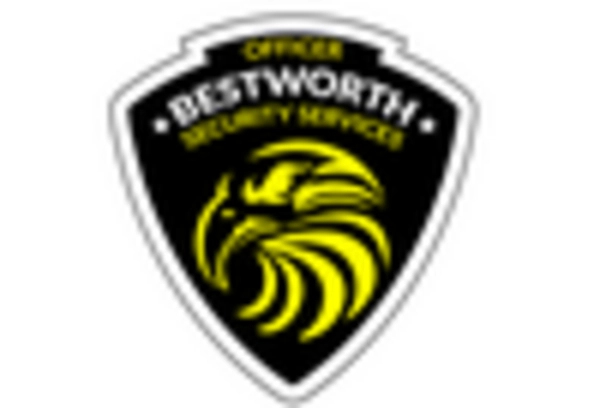The security robots market is currently characterized by a dynamic competitive landscape, driven by technological advancements and increasing demand for automated security solutions. Key players such as Boston Dynamics (US), Knightscope (US), and Savioke (US) are at the forefront, each adopting distinct strategies to enhance their market positioning. Boston Dynamics (US) focuses on innovation, particularly in developing advanced robotic systems capable of navigating complex environments. Knightscope (US), on the other hand, emphasizes regional expansion and partnerships with local law enforcement agencies to bolster its presence in community safety. Savioke (US) is carving a niche in the hospitality sector, leveraging its robots for delivery services, which reflects a broader trend of integrating robotics into various industries. Collectively, these strategies contribute to a competitive environment that is increasingly reliant on technological differentiation and strategic collaborations.
In terms of business tactics, companies are localizing manufacturing and optimizing supply chains to enhance operational efficiency. The market appears moderately fragmented, with several players vying for market share, yet the influence of major companies is palpable. This competitive structure allows for innovation to flourish, as smaller firms often emerge with niche solutions that challenge established players. The collective influence of these key players shapes the market dynamics, fostering an environment where technological advancements are paramount.
In October 2025, Knightscope (US) announced a partnership with a major retail chain to deploy its security robots across multiple locations. This strategic move is significant as it not only expands Knightscope's operational footprint but also demonstrates the growing acceptance of robotic solutions in retail environments. The partnership is likely to enhance the company's visibility and credibility, potentially leading to increased sales and market penetration.
In September 2025, Boston Dynamics (US) unveiled a new version of its Spot robot, equipped with enhanced AI capabilities for real-time threat detection. This development underscores the company's commitment to innovation and positions it as a leader in the security robots market. The integration of advanced AI technologies may provide Boston Dynamics with a competitive edge, allowing it to offer more sophisticated solutions that meet the evolving needs of security professionals.
In August 2025, Savioke (US) secured a contract with a major hotel chain to deploy its delivery robots, further solidifying its presence in the hospitality sector. This strategic action highlights the company's focus on diversifying its applications and tapping into new revenue streams. By aligning its offerings with the needs of the hospitality industry, Savioke is likely to enhance its market position and drive growth in a competitive landscape.
As of November 2025, current trends in the security robots market include a strong emphasis on digitalization, sustainability, and AI integration. Strategic alliances are increasingly shaping the competitive landscape, as companies recognize the value of collaboration in driving innovation. Looking ahead, competitive differentiation is expected to evolve, with a shift from price-based competition to a focus on technological innovation and supply chain reliability. This transition may redefine how companies position themselves in the market, emphasizing the importance of advanced solutions and strategic partnerships.

















Leave a Comment